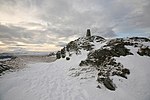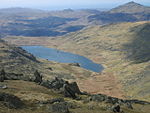Holy Trinity Church, Seathwaite
19th-century Church of England church buildingsChurch of England church buildings in CumbriaChurches completed in 1874Diocese of CarlisleEngvarB from September 2013 ... and 5 more
Gothic Revival architecture in CumbriaGothic Revival church buildings in EnglandGrade II listed churches in CumbriaPaley and Austin buildingsSouth Lakeland District

Holy Trinity Church is in the village of Seathwaite, Cumbria, England. It is an active Anglican parish church in the deanery of Furness, the archdeaconry of Westmorland and Furness, and the diocese of Carlisle. Its benefice is united with those of four other local parishes. The church is recorded in the National Heritage List for England as a designated Grade II listed building.
Excerpt from the Wikipedia article Holy Trinity Church, Seathwaite (License: CC BY-SA 3.0, Authors, Images).Holy Trinity Church, Seathwaite
Park Head Road,
Geographical coordinates (GPS) Address External links Nearby Places Show on map
Geographical coordinates (GPS)
| Latitude | Longitude |
|---|---|
| N 54.3549 ° | E -3.1878 ° |
Address
Holy Trinity
Park Head Road
LA20 6BA , Dunnerdale-with-Seathwaite
England, United Kingdom
Open on Google Maps









